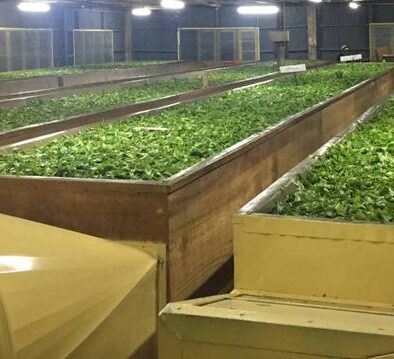Ayurvedic medicine uses curry leaves as a herb because of their great antioxidant capacity and myriad health advantages. They lessen digestive issues, stop early hair ageing, minimize weight gain, and manage diabetes. Due to the presence of vitamin C, minerals, calcium, phosphorus, magnesium, iron, and nicotinic acid, they are useful nutritional supplements. They are, however, extremely perishable and have a very short shelf life. CurryLeaves can be effectively preserved by drying. By lowering the moisture content of the leaves, it extends their shelf life and makes it possible to eat them out of season. Additionally, a suitable pretreatment can successfully aid in maintaining the quality of leaves.
Drying Types Used In Curry Leaves
Outdoor Sun Drying
Fresh Curry Leaves of a known weight were placed in trays that were stored at a height on an angle iron table so that air could circulate through the leaves from the bottom as well and drying could occur more quickly. In the morning, the material was stored for drying, and in the evening, it was taken out of the tray. It was carried out repeatedly until the samples’ weights stabilized.
Solar Drying
A glass with a thickness of 4-5 mm, a flat plate solar collector, and three metallic shelves painted black with an air vent made up the solar drying chamber. Air inside the solar collector was able to escape through the air vent, where it gradually heated up due to the greenhouse effect. This hot air then climbed through the drying chamber, passing through trays and around the curry eaves, removing moisture from the mixture.
Solar Tunnel Drying
Curry leaves were dried using a natural convection walk-in type sun tunnel dryer made of a hemi-cylindrical metallic frame structure wrapped in 200 micron UV stabilized polythene sheet. Three turbine fans and three sensors that recorded relative humidity, temperature, and time were included in the solar tunnel. Curry leaves have an hourly weight reduction during this drying process.
Machine drying
Curry leaves were mechanically dried in tray dryers that could reach a maximum temperature of 200oC. For the purpose of heating the fresh air entering the dryer, horizontal electric heaters are installed. The dryer’s interior air is circulated by a centrifugal blower at the bottom. Three different temperatures of 50, 55, and 60 oC were maintained in the tray drier with a known quantity of curry leaves. Prior to the experiment, the tray dryer was turned on for 10 to 15 minutes to get the system warmed up. A computerised automated control was used to set the desired temperature. At hourly intervals, the weight of the samples was recorded using a precise computerised weighing scale.
RELATED LINKS
8 HEALTHY HERBS TO BE ADDED IN YOUR EVERYDAY LIFE

